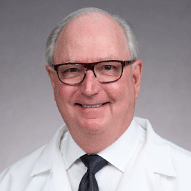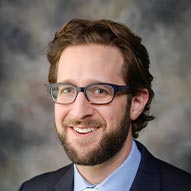At Children’s Health, we have our own ESWL machine in our hospital so your child will receive care from pediatric providers who specialize in treating children. For example, our pediatric anesthesiologists are experts in working with children of all sizes, from 3-pound babies to nearly grown teenagers. Other hospitals send their patients to facilities that treat adults and children.
What is Pediatric Extracorporeal Shock Wave Lithotripsy (ESWL)?
Extracorporeal Shock Wave Lithotripsy (ESWL) is a noninvasive treatment for kidney stones. The goal of ESWL is to shatter your child’s kidney stone into fine pieces of sand. A machine (called a lithotripter) sends a series of shock waves through your child’s skin and into the kidney to break their kidney stones into tiny pieces the size of grains of sand. Your child’s doctor uses an X-ray to aim the waves directly at the stones.
The goal after the ESWL treatment is that your child will pass the stone sand out of their body through their urine. Lots of hydration will help the sand pass. However, sometimes the sand remains in their body. If the sand stays inside long enough, the same issues that caused the kidney stone to form in the first place can cause a new stone to form from the pieces of sand. That’s why an essential part of our care is to work with you and your child to help prevent future stones from forming.
The Comprehensive Pediatric Stone Center at Children's Health brings together all the providers your child may need at the same visit. If needed, this can include nephrologists, urologists, dietitians and social workers. We are passionate about taking care of your child and treating their kidney stones, relieving pain and understanding what causes kidney stones.
What are the benefits of Pediatric ESWL?
- Noninvasive: Extracorporeal means outside the body – so, no scopes or surgical tools go inside your child’s body during ESWL. This treatment is different from other procedures for treating kidney stones, that either go inside through the urinary tract or need a skin cut to enter the kidney. There are no incisions with ESWL.
- Not very painful: Your child will be under anesthesia, so they won’t feel any discomfort.
- Very effective: ESWL can significantly clear your child’s kidney stones about 85% of the time.
- An outpatient procedure: Your child can go home the same day.
Because there are no surgical tools or scopes being inserted into the child’s body, ESWL can treat even the smallest babies. Other procedures to treat kidney stones are difficult in children under age 8 because the surgical equipment isn’t small enough.
What are the side effects of Pediatric ESWL?
ESWL is very safe. A common side effect is a red mark about the size of a quarter where the shock waves entered the body. This mark clears up in a few days. It is expected that there will be blood in the urine. Your child may also have some discomfort after the procedure. Often, over-the-counter pain relievers (such as ibuprofen or acetaminophen) can manage their discomfort.
What are the risks of Pediatric ESWL?
ESWL usually goes very well with very few risks. As with any procedure, there is always the potential for complications. While it is common to see blood in the urine, rarely, the bleeding may build up around the outside of the kidney. Usually, the body reabsorbs the blood.
On extremely rare occasions, significant complications can occur, such as:
- Bleeding causing pressure on the kidney: Too much bleeding can compress your child’s kidney with high blood pressure or damage to the kidney.
- Blockage of kidney: If your child had a lot of stone broken down, the sand fragments may try to exit the body all at once. Too many fragments at one time can create a blockage in the ureter (the tube that carries urine from the kidney to the bladder).
- Infection: If a urine infection develops behind a blockage caused by the stone, the infection might spread into the bloodstream.
Sometimes, your child needs an additional procedure to relieve bleeding, a blockage or an infection. Fortunately, these are quite rare and ESWL is very safe.
What are Children’s Health’s outcome metrics for Pediatric ESWL?
ESWL at Children’s Health is effective at successfully breaking down kidney stones about 85% of the time. This rate is slightly higher than the national average.
What to expect with Pediatric ESWL
In many ways, ESWL is like other surgeries and procedures.
What to expect before Pediatric ESWL
Here’s what you can expect before ESWL:
- Your child’s doctor asks you questions to understand what may be causing your child’s kidney stones. They also ask about your child’s possible risks related to anesthesia.
- We test your child to check for an infection behind the blocked kidney stone.
- Our preoperative team calls to remind you when your child should stop eating and drinking. It is important that your child’s stomach is empty before they undergo anesthesia.
What to expect during Pediatric ESWL
On the day of the procedure, the care team takes your child to the preoperative area. Your child receives liquid medicine to calm them. The child is then taken to the operating room and given anesthesia to put them asleep. We place your child on a special bed that has a cutout shaped like the letter D. Your child will lie in a position that places their kidney over the cutout. The care team brings a water balloon to the cutout, so your child is resting on the water balloon.
The doctor uses an X-ray to see the stone in your child’s kidney. Often, the doctor will move your child a few times to aim at the stone(s) from different angles. The entire bed can move so that the ESWL machine (the lithotripter) can aim the shock waves right at the stone.
The procedure takes about an hour. We ask at least one parent or guardian to remain in the hospital during your child’s procedure.
What to expect after Pediatric ESWL
The care team brings your child to the recovery room. Here, you can be with your child. When your child is ready to go home, the nurse reviews all the instructions for medications, home care and any follow-up appointments.
We recommend that you give your child both acetaminophen and ibuprofen for the first two to three days to manage pain. For example, you first give a dose of acetaminophen, then three to four hours later, you give a dose of ibuprofen. Then three to four hours later, you give acetaminophen again, and so on. Rotating over-the-counter medicines in this way helps relieve a child’s pain without using potentially addictive medications.
Your child should be able to return to their normal activities after one to two days.
What questions should I ask my provider about Pediatric ESWL?
Some questions you may want to ask your doctor include:
- How many times have you performed ESWL?
- What other options are there for treating my child’s kidney stones?
- Who in the Dallas-Fort Worth area has the most experience performing ESWL on children?
- How soon will I be able to see my child after ESWL?






